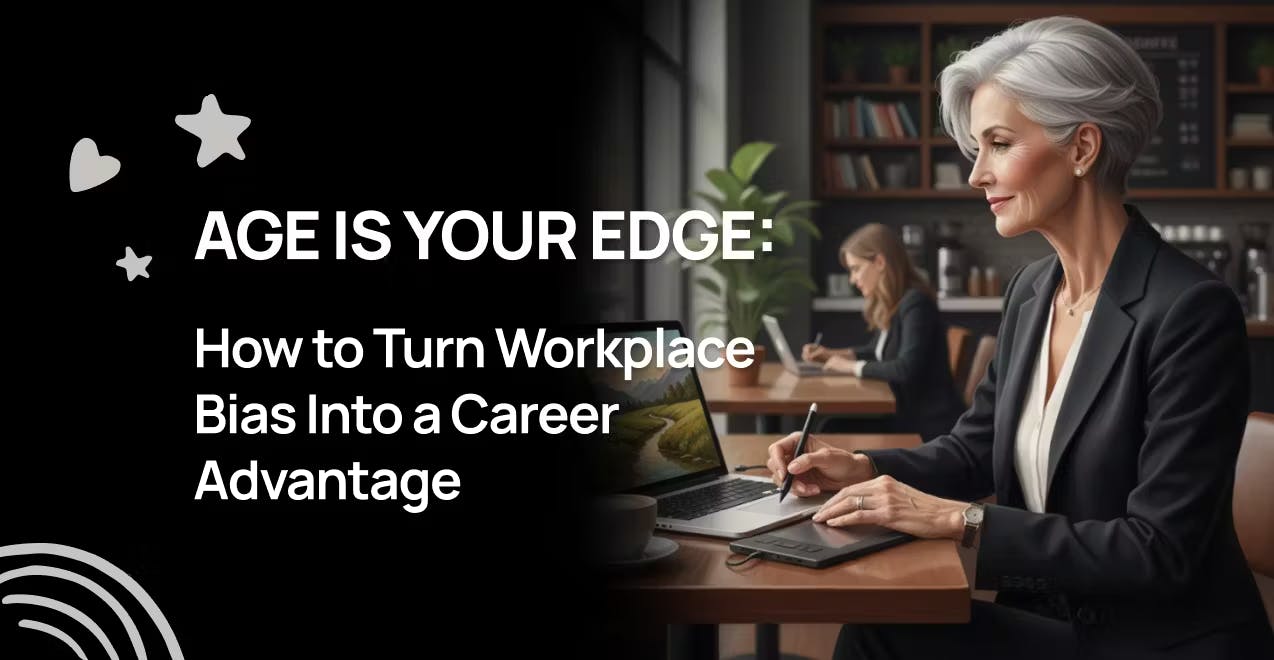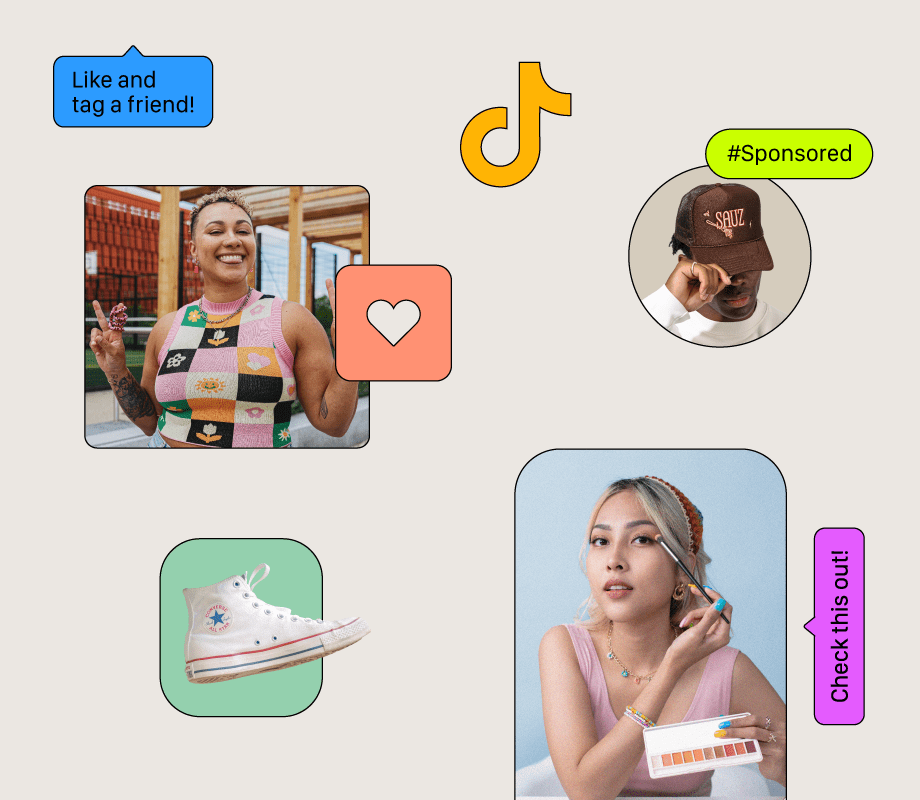Experience sharpens judgment, boosts productivity, and builds wisdom. Yet, many organizations undervalue these strengths by favoring youth over experience. Despite decades of progress in diversity and inclusion, age discrimination remains one of the most accepted forms of workplace bias.
According to a survey by DateMyAge, 73% of workers over 50 feel that their best years are behind them, while 62% believe their employers have written them off. 🌍 These statistics highlight how deeply rooted age bias has become -not just in workplaces but across society.
Ageism isn’t just a professional issue; it’s cultural. Many workplaces subtly communicate that innovation belongs to the young. But here’s the truth: talent doesn’t have an expiration date. The goal isn’t just to fight bias, it’s to prove that experience is a competitive advantage.
Understanding the Root Causes of Workplace Age Bias
🧠 How Stereotypes Form and Persist
Age bias often stems from long-standing stereotypes. Many assume older employees resist change, struggle with technology, or lack energy. These assumptions persist even when evidence suggests otherwise.
Interestingly, a study published in Experimental Aging Research shows that while the workplace is rife with implicit age bias, explicit bias is far less common. This suggests that these attitudes are unconscious, and those who display unconscious bias are often far more open to working on it.
The Economic Impact of Age Discrimination
The cost of sidelining older workers is enormous. Companies that ignore experience often face:
- Higher turnover costs
- Loss of institutional knowledge
- Reduced mentorship opportunities
- Declines in innovation continuity
Experienced workers often make better mentors, managers, and decision-makers because they’ve seen economic cycles, market disruptions, and cultural shifts before.
According to AARP, age discrimination costs the U.S. economy nearly $850 billion annually in lost productivity and turnover. 📊
==In other words, inclusion isn’t just ethical. It’s financially smart.==
n
Maintain Your Worth: Staying Ahead in a Changing Workplace 💪
Age bias won’t vanish overnight, but individual action can make a remarkable difference. The best way to challenge bias is to stay ahead of it.
🔍Here’s how to turn perception into power.
Continuous Learning and Upskilling
The belief that older professionals can’t learn new skills is outdated. Online platforms like Coursera, LinkedIn Learning, and edX allow continuous professional development at any stage. Stay current on:
- Industry trends
- New technologies (AI, automation, analytics)
- Regulatory changes
Adapting to Emerging Technologies
You don’t need to be a programmer to understand the business value of new tech. By integrating tools like generative AI, CRM systems, or advanced analytics into your daily work, you signal adaptability and curiosity — traits that employers prize.
Using Experience to Predict and Prepare for Change
Experience gives you foresight. You’ve seen trends rise and fall, and that perspective allows you to anticipate shifts that younger peers may miss. Use this insight to:
-
Propose strategic pivots
-
Advise on risk management
-
Mentor teams through uncertainty
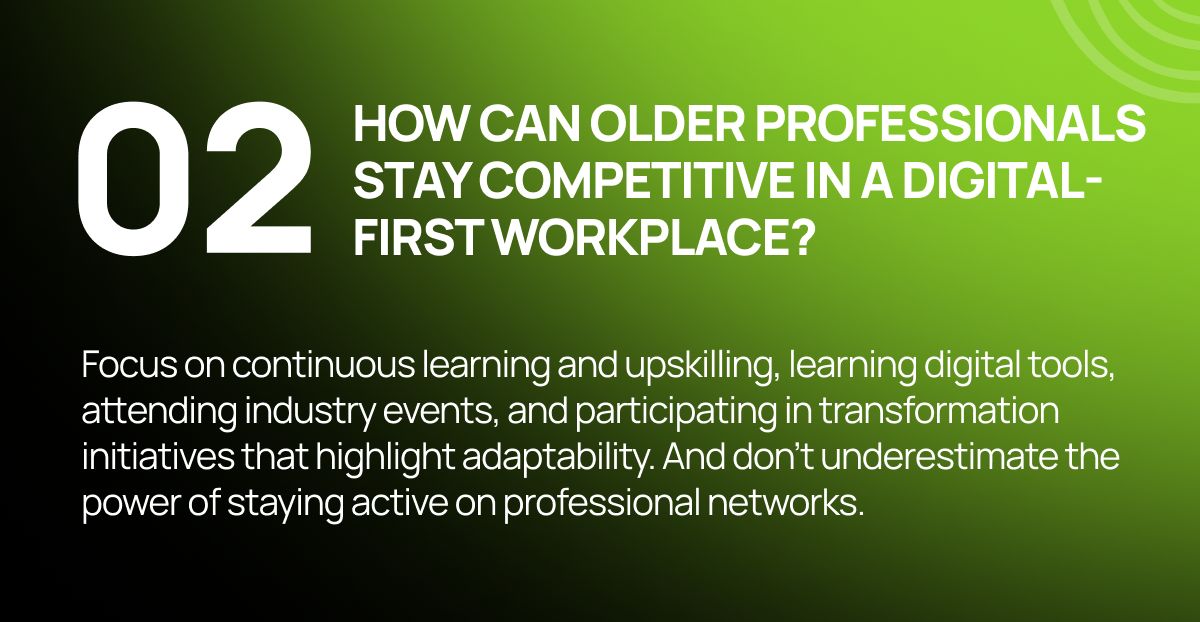
⚡ Deliver Business-Critical Value to Challenge Bias
Focusing on Measurable Outcomes
Age stereotypes vanish when performance metrics shine. Whether it’s optimizing a process, mentoring a team, or launching a new initiative, focus on measurable results.
Quantify your impact by tracking:
- Revenue generated
- Costs reduced
- Projects completed under budget
- Client satisfaction metrics
==Value is universal. No one can argue with numbers.==
Championing Innovation Regardless of Age
Challenge the misconception that innovation is a young person’s game. Many industry-changing ideas came from experienced minds, think of Jeff Bezos and Reed Hastings, who launched major initiatives in their 40s and 50s.
Prove your relevance by:
- Initiating cross-functional collaborations
- Leading pilot programs for new tools
- Advocating for data-driven decision-making
By driving innovation, you replace stereotypes with results.
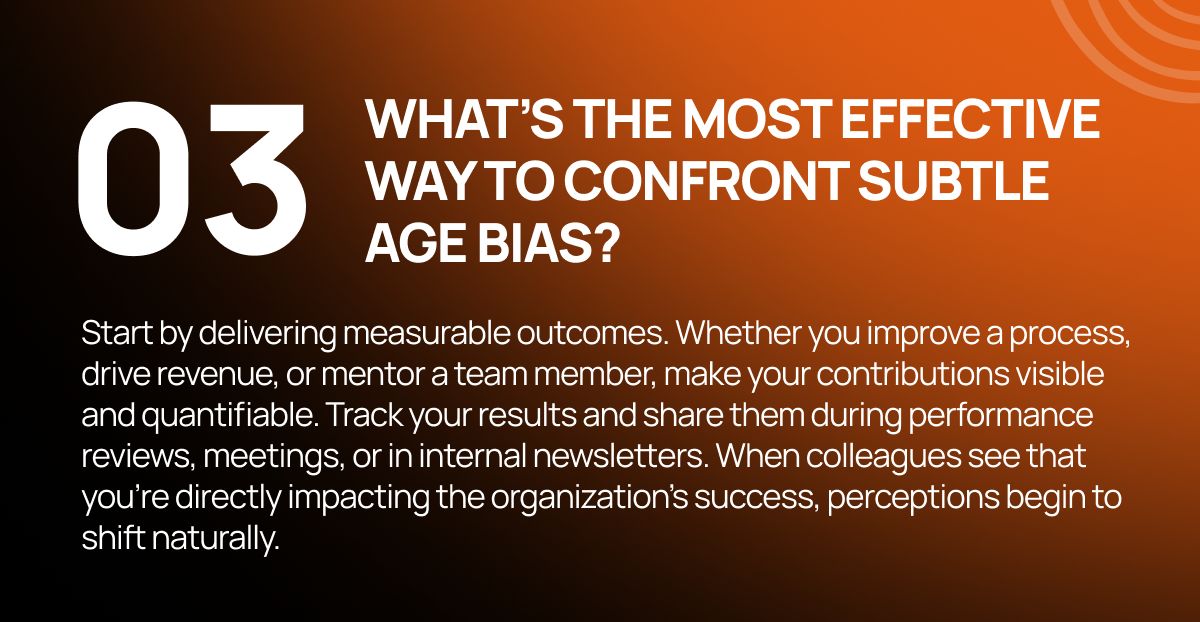
🧭 Shaping the Future: Why Older Workers Are Key to Transformation
Leading Change Initiatives
Transformation projects (digital transformation, sustainability, or market expansion) require leadership stability. Older workers bring both. Their experience navigating crises, mergers, and market shifts provides invaluable balance.
When older professionals lead, organizations gain perspective and resilience. They understand not only what must change but how to execute that change effectively.
Mentoring and Intergenerational Collaboration
Mentorship builds bridges between generations. Older workers offer institutional knowledge, while younger ones bring fresh perspectives. Together, they create teams that are both innovative and stable.
Companies like IBM and Deloitte have launched reverse mentoring programs, pairing senior employees with junior colleagues to share digital and strategic insights. This mutual exchange reduces bias and strengthens collaboration. n
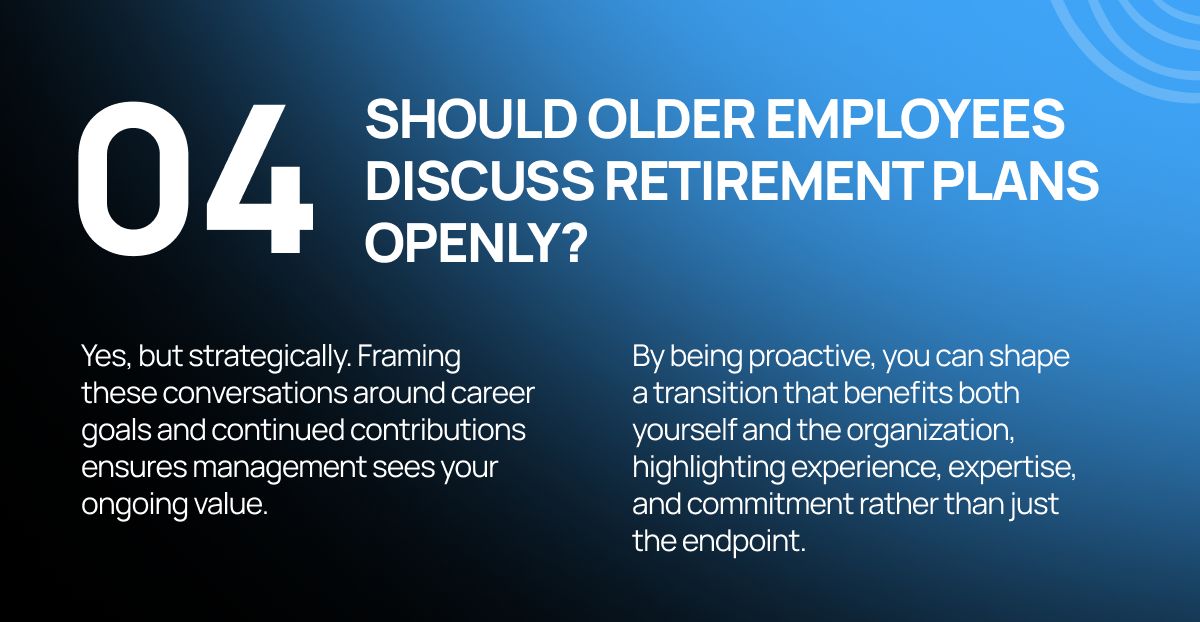
Overcoming Age Bias: Practical Strategies for Individuals and Organizations
Individual Tactics for Resilience 🗣️
- Network actively. Stay visible inside and outside your company.
- Document achievements. Keep data-backed examples of impact.
- Rebrand yourself. Update your digital presence and résumé regularly.
- Maintain physical and mental health. Energy influences perception.
What Employers Can Do to Eliminate Age Bias
Forward-thinking organizations can reduce ageism by:
- Conducting bias awareness training
- Creating mixed-age project teams
- Auditing hiring and promotion data for age disparities
- Supporting lifelong learning initiatives
A diverse age mix improves creativity, decision quality, and overall business resilience.
🚀Overcoming Age Bias: Practical Strategies for Individuals and Organizations
Individual Tactics for Resilience
- Network actively. Stay visible inside and outside your company.
- Document achievements. Keep data-backed examples of impact.
- Rebrand yourself. Update your digital presence and résumé regularly.
- Maintain physical and mental health. Energy influences perception.
🌱 What Employers Can Do to Eliminate Age Bias
Forward-thinking organizations can reduce ageism by:
- Conducting bias awareness training
- Creating mixed-age project teams
- Auditing hiring and promotion data for age disparities
- Supporting lifelong learning initiatives
A diverse age mix improves creativity, decision quality, and overall business resilience.
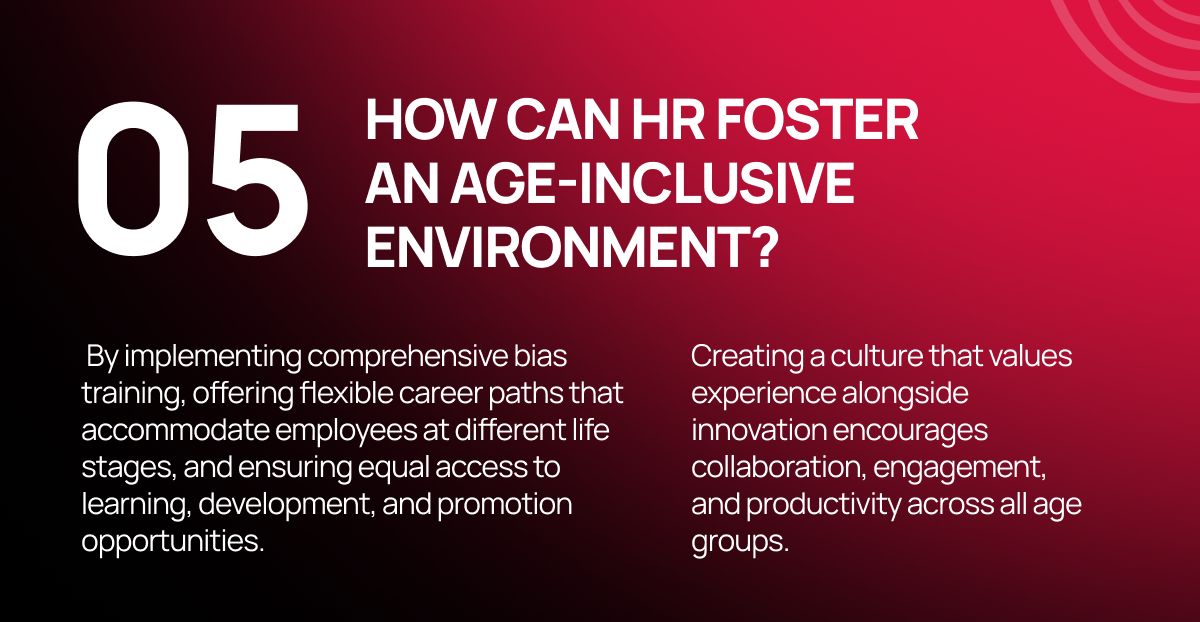
📊 Key Takeaways: Turning Experience Into Influence
- Stay relevant through lifelong learning.
- Drive measurable business value.
- Participate in high-impact, future-focused projects.
- Mentor others and promote collaboration.
- Communicate achievements confidently.
Conclusion: Proving That Age Is an Advantage 💡
Overcoming workplace bias requires grit, adaptability, and confidence. Don’t let stereotypes define your trajectory. Continue learning, contributing, and leading with intent. Every successful project, every mentorship moment, and every measurable win reinforces one message:
Age is not a limitation — it’s leverage.
Join a team that values diversity, growth, and real impact – we’re hiring! Explore opportunities at Social Discovery Group today. 🚀
:::info
Written by Svetlana Goryushkina, Global People Director at Social Discovery Group.
:::

